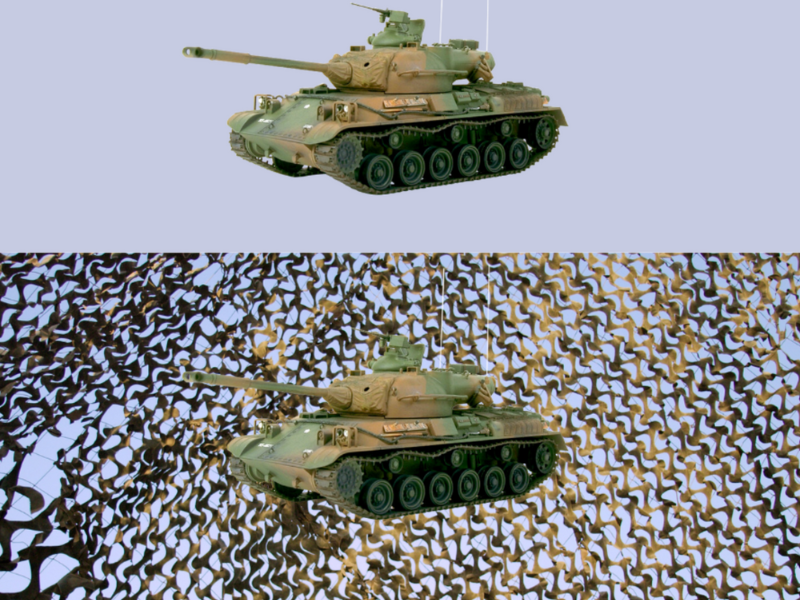When it comes to survival and strategy in the modern battlefield, visibility can be very risky. However, staying unseen has always been a crucial aspect of warfare. However, these days, it requires far more than simply wearing muted colours or hiding behind trees. With technology advancing, there are advanced surveillance tools and sensors that scan the ground, sky, and everything in between. The need for sophisticated concealment has led to a significant innovation: multispectral camouflage net technology.
The Evolution of Camouflage
Camouflage has travelled a long way since its early uses. Initially, it was just about mimicking the surrounding terrain—things like earthy tones in deserts, greens in forests, and whites in snowy regions. And soldiers, vehicles, and installations were covered in patterns and colours that helped them blend into the background. But as technology progressed, so did the methods of detection.
Today, opponents use the naked eye, but a wide range of sensors that look for signs of life and movement across the visible spectrum and beyond. There are also infrared sensors that detect heat signatures. Radar systems scan for movement and physical structures. And the night vision gear picks up thermal differences. Here, traditional camouflage falls short. That’s precisely where multispectral camouflage comes in. It hides objects from sight as well as from machines.
What Does “Multispectral” Really Mean?
Multispectral camouflage nets are designed to mask or distort the presence of an object across multiple spectral bands. That means they are not only useful to the naked eye but are also effective against infrared sensors, thermal imagers, and radar systems. So, instead of trying to appear as something else, these nets attempt to appear as nothing at all. It blends into the background pretty well in both human and machine perception.
How Does It Work?
The secret behind multispectral camouflage lies in its careful construction. These nets are made from special fabrics and materials that do the job effectively. They reflect, absorb, or block different kinds of radiation. Some layers may be designed to reflect visible light in a way that mimics natural surroundings. At the same time, others absorb heat to conceal the thermal signature of a vehicle or piece of equipment underneath. These nets are often lightweight, foldable, and portable. Impressive, isn’t it? This means they can be deployed quickly. It may be to cover a vehicle, a weapons system, or a command post. In static positions or mobile operations, their flexibility makes them a powerful tool.
Why Is This Important Now?
The modern battlefield is becoming increasingly sensor-driven. From drones to satellites, the tools used to locate targets are far more sensitive and far-reaching than ever before. A tank may be hidden in a shadow, but its heat signature could give it away to an overhead drone equipped with thermal imaging. A makeshift outpost might be camouflaged in colour, but its shape could be picked up by radar.
In this environment, traditional concealment techniques are no longer enough. Multispectral camouflage nets help bridge the gap between passive hiding and active deception. They do that by reducing the chances of detection across multiple wavelengths. Additionally, they provide forces with the ability to move, pause, and act with a lower risk of being detected.
Applications in the Field
Multispectral camouflage nets are now used in various scenarios. They can be used in field command posts, artillery positions, and even logistic hubs and forward operating bases. Troops can quickly cover up their equipment and infrastructure. These turn the exposed zones into low-visibility zones in minutes.
They are also used in peacekeeping and humanitarian operations. This is to protect resources from theft or attack. In these settings, avoiding detection entirely may help reduce tensions, prevent escalation, and safeguard personnel and supplies.
The Role of Design and Terrain Matching
One often overlooked strength of these nets is their adaptability. It’s not a one-size-fits-all solution. The design of each net can be tailored to specific regions and seasons. A desert-based net may have different thermal and visual characteristics compared to one used in arctic regions. The pattern, colour, and reflective properties can be adjusted to suit foliage, sand, rock, or snow.
This type of terrain matching is functional, practical, and aesthetically pleasing. The better the camouflage suits the local environment, the more difficult it is to detect, even with sophisticated imaging.
Manufacturers often work closely with defence planners and engineers to study the conditions of deployment zones. They then produce camouflage systems that closely align with both environmental and tactical needs.
Challenges and Limitations
No technology is perfect, indeed. And multispectral camouflage, too, has its limitations. To put it simply, while these nets reduce visibility across several spectrums, they can’t entirely erase it. If a sensor is powerful enough or if the net is used improperly, detection is still possible. Suppose it’s loose, torn, or dirty.
There are environmental factors, such as rain, dust, or wind, that can affect the performance of the net. A wet surface might reflect more light, while a moving net might disrupt a carefully created thermal shield.
Moreover, as detection tools evolve, camouflage must also keep pace. The race between being seen and staying hidden is an ongoing one. That’s why constant research and upgrades are vital in this field.
A Silent Guardian
At its core, multispectral camouflage net technology is about invisibility. This is, of course, not the same as what’s seen in science fiction. But the practical, everyday kind that saves lives on the battlefield. It’s about creating silence where noise could bring danger. It’s about letting strategy breathe in a world where surveillance never blinks.
While it may not be as dramatic as a high-speed drone or as flashy as a missile system, its value is no less critical. Because there are times when what keeps you safe is what they can’t see you doing. If you’re looking for MSCN – Multispectral Camouflage Net, get in touch with OEFHZ soon! We provide you with everything that you require. Also, remember that in the balance of power, perception matters. And with multispectral camouflage, the power of not being seen might just be the most crucial advantage of all.




